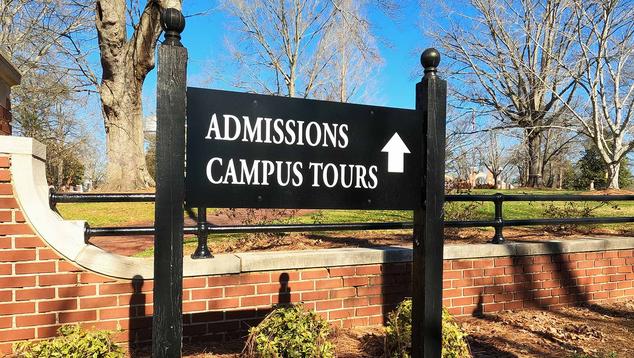The U.S. Supreme Court’s ruling on how Harvard and the University of North Carolina use race in college admissions is expected by early June. Informed expectations are that the high court will find against the two universities and rule that race cannot be considered as a factor in admissions.
The use of race or other ascriptive characteristics in college admissions (and in many other situations in American society) has a long history. Most selective colleges in the past explicitly took such characteristics (religion, ethnic background, gender) into account in their admissions policies. It was only in the decades of the 1960s and 1970s that most Ivy League schools began to admit students with the ascriptive characteristic of being female. Highly selective schools admitted few Black students until after World War II.
The general trend of U.S. history has been to remove such considerations in making hiring and admissions decisions, under the force of law.
Harvard and U.N.C. argue that the situation today has become more complex, and that taking race or other ascriptive characteristics into account in an affirmative way, without bans or explicit quotas, has a net-positive effect on all students involved.
This diversity argument centers on the assumption that admitted students help educate, socialize and stimulate other students on campus. Admitted students augment faculty, staff and college resources as contributors to the overall college experience. Exposure to and interaction with students who have different backgrounds and life experiences benefit not only the students themselves but their peers and society in the long run.
As U.S. Solicitor General Elizabeth Prelogar argued before the Supreme Court, “College is the training ground for America’s future leaders,” and, it follows, a diverse student body with wide differences in student backgrounds, experiences, interests and perspectives provides a positive and important element of this training.
This is a complex argument (as evidenced by the testimony before the Supreme Court). We know that the American public agrees in principle with the idea that diversity on college campuses is good. But, and this is key, the public does not agree in practicality that colleges should achieve this objective by using race as a factor in admissions decisions.
- In a recent Reuters/Ipsos poll, for example, 58% of respondents supported programs whose goal is to increase the racial diversity of students on college campuses. But in the same poll, 62% said race and ethnicity should not be considered at all in college admissions.
- A Washington Post/Schar School poll found that 64% of Americans think “programs designed to increase the racial diversity of students on college campuses” are “a good thing.” Yet almost the same percentage support the Supreme Court’s banning colleges and universities from considering a student's race and ethnicity when making decisions about student admissions.
- Plus, Gallup’s historical trend question includes the diversity justification in the description of the “take race into account” argument and still has found consistently that the majority are opposed to the idea. (“Which comes closer to your view about evaluating students for admission into a college or university -- applicants should be admitted solely on the basis of merit, even if that results in few minority students being admitted (or) an applicant's racial and ethnic background should be considered to help promote diversity on college campuses, even if that means admitting some minority students who otherwise would not be admitted?”)
In short, the argument from selective colleges that increased diversity on campus is a good thing resonates positively with Americans, while the majority of Americans do not support explicitly increasing the probability of admission for applicants with certain diverse racial or ethnic characteristics as a mechanism to achieve that objective.
On this latter point, as I summarized in a 2018 review, “The most important conclusion from all of these data is that Americans do not like the idea of colleges using race and ethnicity as a factor in decisions on college admissions.” And research continues to support this conclusion.
- Gallup polling in 2016 showed that less than 10% of Americans said race or gender should be “major factors” in college admissions decisions. By contrast, 73% said high school grades should be a major factor and 55% said the same about standardized test scores. Americans also did not think that parental alumni status or athletic ability should be major factors in admission decisions.
- Pew Research last year listed eight factors and asked Americans how important each should be in college admissions decisions. Seventy-four percent said race or ethnicity should not be a factor in college admissions, and 82% said the same about gender.
- A March 2022 national survey conducted by Selzer Research for Grinnell College asked Americans, “In order to expand access to college for racial minorities, do you think a college or university should or should not be allowed to take a person's race into account when deciding whether to admit that person as a student?” About two-thirds of Americans -- 68% -- said “should not.”
A November 2020 vote on the issue in the blue state of California reflects the attitudes about race and college admissions evidenced in national polling. Fifty-seven percent of California voters rejected a proposal to repeal an earlier ban on the use of race in admissions to public universities in that state.
Americans’ support for diversity on campuses while at the same time opposing taking race into account in college admissions decisions reflects an important consideration in the analysis of public opinion. The public’s conceptual agreement with a principle or underlying value does not necessarily lead to agreement with specific suggestions for addressing that principle or value in practical terms. A somewhat similar example is provided by Gallup polling on public perceptions of the optimal role of government in providing healthcare for Americans. Americans support the argument that the U.S. government should ensure that everyone has access to healthcare. But they oppose the most obvious way to bring that about -- a government-run healthcare system.
Consideration of Race as a Compensatory Factor
There is also an argument that increasing the probability that applicants with certain racial and ethnic characteristics are admitted to selective colleges is justified as a compensatory mechanism -- serving to redress the lasting effects of previous epochs in American history, when individuals with these characteristics suffered the extraordinary harms engendered by the institutions of slavery and state-sponsored segregation.
Gallup data show that Americans recognize the lasting negative impact of the nation’s history of slavery on Black Americans today. But Gallup data and other research show that Americans are opposed to the idea of cash reparations to compensate for those practices.
These responses in reference to the more general situation of economic reparations suggest that the compensation/redress for past harms argument would not change Americans’ underlying opposition to the idea of taking race into account in college admissions.
Bottom Line
The admissions policies of Harvard, U.N.C., and presumably most other selective colleges continue to be out of sync with the views of the American public. These attitudes persist despite other evidence showing that Americans applaud, in theory, the value of diversity on college campuses and the need to recognize the continuing negative impact of the nation’s discriminatory history.
College officials can contend that the public doesn’t fully understand the nuances of the situation or that public opinion need not be a relevant factor in their policymaking. But ultimately, the public controls the levers of government at the state and national level, and of course the lifeblood of colleges -- their students -- comes from the general public population. So it may be useful for colleges to spend time understanding the complexities of American public opinion and in turn to provide broader and more convincing arguments to the public to support the college’s conviction that it is appropriate and justifiable to consider race as a factor in their admissions policies. This will be particularly important if, as predicted, the Supreme Court rules that such considerations are unlawful under the Constitution.
Colleges and universities face a number of challenges today, including declining enrollments, a growing partisan divide in how they are perceived, and increasing pressure from some state governments over aspects of their curricula and their faculty. Dealing with the aftermath of an adverse Supreme Court decision will potentially provide another addition to this list.



